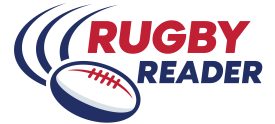Rugby is a physically demanding sport that requires strength, speed, agility, and endurance. Every position on the field requires a unique set of skills and attributes, but some positions are widely considered to be more challenging than others.
In this article, we will explore the question of what is the hardest position in rugby. We’ll also breakdown the physical demands and mental fortitude required for each position.
The rugby positions
Before we get into which is the hardest, let’s talk about the different positions on a rugby team.
In rugby, there are 15 players on the field for each team, each with a specific position and role to play. These positions are divided into two main groups: forwards and backs.
Forwards
- Loosehead prop
- Hooker
- Tighthead prop
- Second row/lock
- Second row/lock
- Blindside flanker
- Openside flanker
- Number 8
Backs
- Scrum-half
- Fly-half
- Left wing
- Inside centre
- Outside centre
- Right wing
- Fullback
Each position has specific responsibilities and roles in the game. For example, the forwards are primarily responsible for the scrum, lineout, and rucks, while the backs are responsible for the team’s attacking moves and kicking game. The scrum-half and fly-half are often the playmakers, directing the team’s strategy and making important decisions on the field.
What is the hardest rugby position?
There is no one answer to what the hardest position in rugby is, as each position has its own unique challenges and demands. However, some positions are generally considered to be more physically demanding or mentally challenging than others.
Physical demands
In terms of physical demands, front row players such as the hooker and prop are often considered to have the toughest roles due to the demands of scrummaging and their frequent involvement in close contact situations. They are required to provide a stable platform for the scrum and engage in the physical battle with their opposite numbers. Others would agree that the hooker is the toughest position on the team.
The flanker positions, particularly the openside flanker, are also considered to be physically demanding as they are often required to make numerous tackles, compete at the breakdown and carry the ball.
Toughest position mentally
In terms of mental demands, the fly-half is often considered to have the toughest job as they are responsible for directing the team’s attack, making tactical decisions and executing precise kicks. The scrum-half also has a mentally demanding role, as they need to be aware of the movements of both the forwards and backs and make quick decisions based on what they see on the field.
Wrapping up
In conclusion, while every position in rugby requires a high level of physical and mental toughness, some positions are particularly demanding. From the grunt work required of the hookers and prop positions to the strategic playmaking of the fly-half, each position presents its own unique challenges and risks.
Ultimately, what makes a position “hard” in rugby is a combination of factors, including the physical demands of the role, the mental fortitude required to perform under pressure, and the risks associated with the position.
